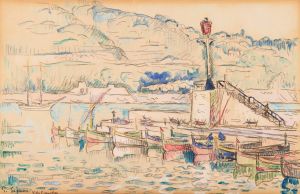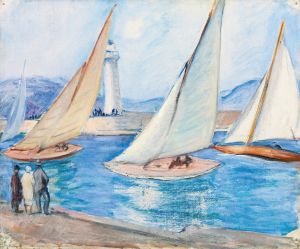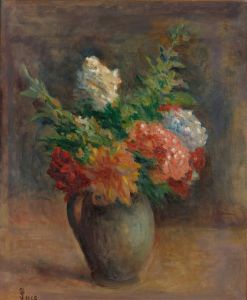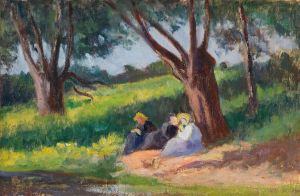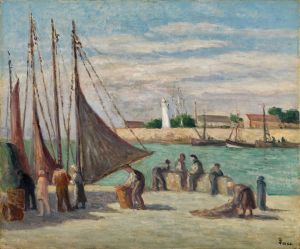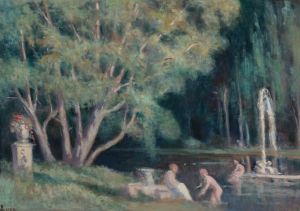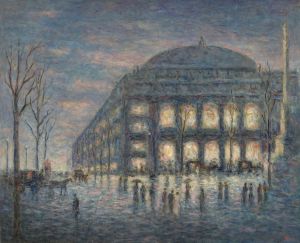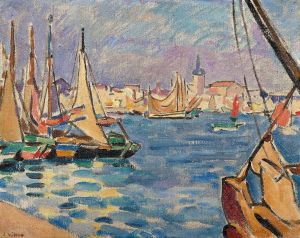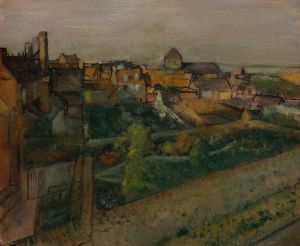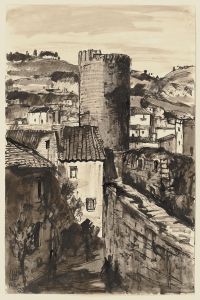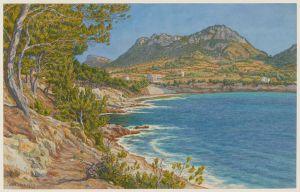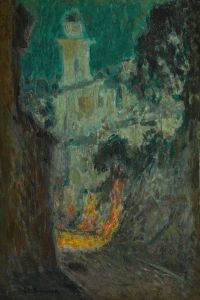
Paysage à Saint-Tropez
A hand-painted replica of Maximilien Luce’s masterpiece Paysage à Saint-Tropez, meticulously crafted by professional artists to capture the true essence of the original. Each piece is created with museum-quality canvas and rare mineral pigments, carefully painted by experienced artists with delicate brushstrokes and rich, layered colors to perfectly recreate the texture of the original artwork. Unlike machine-printed reproductions, this hand-painted version brings the painting to life, infused with the artist’s emotions and skill in every stroke. Whether for personal collection or home decoration, it instantly elevates the artistic atmosphere of any space.
Maximilien Luce was a prominent French Neo-Impressionist artist known for his paintings, illustrations, and engravings. He was born on March 13, 1858, in Paris, France, and became associated with the Neo-Impressionist movement, which was characterized by the use of pointillism and a focus on the effects of light and color. Luce was deeply influenced by the works of Georges Seurat and Paul Signac, two leading figures of the movement.
One of Luce's notable works is "Paysage à Saint-Tropez," which translates to "Landscape at Saint-Tropez." This painting exemplifies Luce's skillful application of the Neo-Impressionist technique, capturing the vibrant and serene atmosphere of the Mediterranean landscape. Saint-Tropez, a picturesque coastal town in the south of France, was a popular destination for artists seeking inspiration from its natural beauty and unique light.
Luce's "Paysage à Saint-Tropez" showcases his mastery of color and light, employing the pointillist technique to create a harmonious and luminous scene. The painting likely depicts the tranquil waters and lush surroundings of Saint-Tropez, rendered with meticulous attention to detail through small, distinct dots of color. This technique allows the colors to blend optically, creating a vivid and dynamic composition that captures the essence of the location.
Throughout his career, Luce was not only dedicated to his art but also engaged in political activism. He was known for his anarchist beliefs and often depicted scenes of working-class life and social struggles in his works. Despite his political inclinations, Luce's landscapes, such as "Paysage à Saint-Tropez," reflect a sense of peace and beauty, highlighting his versatility as an artist.
Luce's contributions to the Neo-Impressionist movement were significant, and his works continue to be celebrated for their technical precision and emotive power. "Paysage à Saint-Tropez" is a testament to his ability to capture the natural world with both scientific accuracy and artistic sensitivity. The painting remains an important part of Luce's oeuvre, illustrating his commitment to exploring the interplay of light, color, and form.
Maximilien Luce passed away on February 6, 1941, in Paris, leaving behind a rich legacy of artworks that continue to be studied and admired. His paintings, including "Paysage à Saint-Tropez," are held in various public and private collections, reflecting his enduring influence on the art world. Luce's work remains a vital part of the Neo-Impressionist canon, offering insight into the innovative techniques and artistic philosophies of the late 19th and early 20th centuries.





